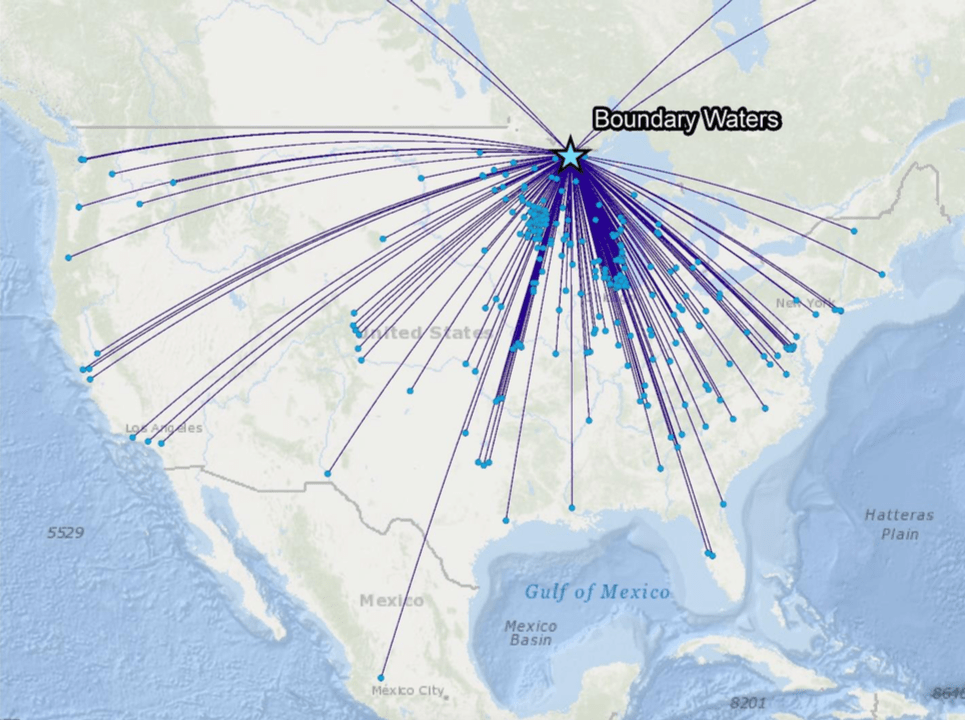
A new economic study from the Friends of the Boundary Waters Wilderness, with support from the Quetico Superior Foundation, has found the wilderness generates significant spending each year.
Dr. Evan Hjerpe of Conservation Economics Institute conducted the study during the 2016 summer tourism season. In addition to the $57 million of direct economic impact, Hjerpe also found that canoe country creates about nearly 1,000 jobs and $25 million in wages. Including indirect activity, the wilderness stimulated overall economic output of $77 million in one summer season. Visitors generated $14 million in local taxes.
The study was conducted by surveying 513 wilderness users, and putting their reported spending into software that could extrapolate it to all 150,000 annual users. The study did not look at winter visitors to the wilderness, which is growing in popularity according to the Forest Service.
This is the first-ever analysis of economic impact by Boundary Waters visitors, and the first one in two decades to look at any wilderness area in the United States.
“We’ve always believed that Boundary Waters visitor spending creates sustainable economic opportunities and jobs in the surrounding communities,” stated Paul Danicic, executive director of the Friends. “The study scientifically validates that the BWCAW is critical to the economic health of northeastern Minnesota and will continue to have a significant impact for years to come.”
The Boundary Waters is a notably valuable asset because most wilderness users visited from outside the area, effectively bringing in financial resources from elsewhere to St. Louis, Lake, and Cook counties. The study authors says the Boundary Waters should therefore be considered an “export industry.”
The study did not look at ancillary impacts, like sales of photography or art inspired by the Boundary Waters, or property value changes related to being near the popular wilderness area.
The bulk of direct spending was on outfitting, which the study finds was a $29.7 million industry in 2016.
Dr. Hjerpe holds a Ph.D. in forest economics and management from Northern Arizona University. Before serving as director of CEI, he was a Senior Economist for The Wilderness Society.
The full study is available for download at bit.ly/BWCAcreatesjobs.
Note: The Quetico Superior Foundation provided a grant to support this study. The Foundation also publishes Wilderness News.

